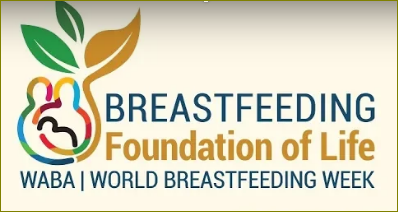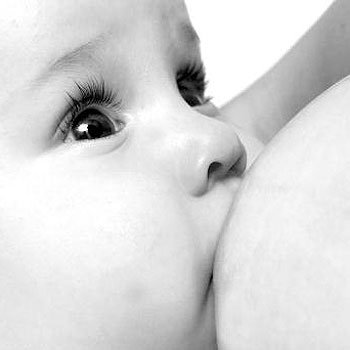Nutritional Value of Breast Milk
Steemians, I share another topic related to my publications dedicated to the biochemical composition and the nutritional value of different foods. Today I will talk about breast milk within the framework of World Breastfeeding Week that this year has as its slogan "Foundation of Life".





Since 1992, the World Breastfeeding Week is celebrated, between August 1st and 7th of each year. It was an initiative of the World Health Organization (WHO) and the United Nations Children's Fund (UNICEF). Currently, the World Alliance for Breastfeeding (WABA) works together with WHO and UNICEF, coordinating each year the celebration of the World Breastfeeding Week (WBW) with a large number of activities in more than 170 countries worldwide. It is celebrated at the beginning of August because it coincides with the anniversary of the Innocenti Declaration, in August 1990, on the protection, promotion and support of breastfeeding.





Celebrating each year this week dedicated to Breastfeeding aims to raise awareness of humanity about the multiple benefits of this food both for the growth and healthy development of the child and for the health of the mother. Breastfeeding is the most effective and least expensive means to ensure that mothers and children reach a better quality of life that translates into a better level of health. It is advisable to start breastfeeding in the first hour of life of the newborn and maintain it exclusively until 6 months, that is, the baby only receives breast milk as food.




Breast milk is an aqueous suspension of nutrients, cells, hormones, growth factors, immunoglobulins and enzymes that form that vital food for the immune capacity of the newborn and even what will help strengthen your immune system in the future. This suspension has a variable composition. Its chemical composition varies from prepartum, colostrum, transition milk and mature milk. Milk varies with the time of day and with the passage of days in the same mother. Such variations are functional, breast milk has the property of adapting to the individual needs of each infant. Water is the major component of breast milk. Therefore, it contributes to the mechanism of regulation of the body temperature of the newborn. It has been demonstrated that the needs of infants in a warm climate can be completely satisfied by the water of breast milk [R1].









It is one of the most abundant enzymes in breast milk, capable of breaking the cell wall of many bacteria. Human lysozyme is antigenic and serologically distinct from bovine.



Lactose is the main carbohydrate, it is found in a proportion of 6.8 g/100 ml in breast milk. It is a disaccharide composed of galactose and glucose. It is synthesized in the mammary gland. Its main function is the contribution of energy. However, it seems to be specific for the growth of the newborn because it facilitates the absorption of calcium and is a source of galactose (essential for the production of galactolipids), which are essential for the development of the central nervous system.



The minerals in breast milk, including calcium, magnesium, iron, copper, phosphorus and zinc, have a great advantage that favor the newborn, which is its high bioavailability. The distribution of minerals is one of the keys, because they are linked to serum proteins, a citrate or a lipoprotein membrane of the fat globule. As for sodium and potassium, potassium levels are much higher than sodium levels, as well as the proportion found inside the cell. Low levels of sodium and high potassium in breast milk have a beneficial effect on the child's development.



Vitamin B6 Folic Acid
Vitamin B12
Vitamin C
Vitamin D
Vitamin E
Vitamin K
Pantothenic Acid
Biotin
Vitamin A
Vitamin B1
Vitamin B2



They are an important source of energy (around 50% of total calories) and are essential for the development of the nervous system. Fat is the most variable component of milk. Milk lipases actively participate in the formation of the emulsion, producing a thinner clot and facilitating digestion. The lipids are in the form of globules encapsulated by a membrane formed by phospholipids, with a high concentration of essential fatty acids. These essential fatty acids are a fundamental part in the formation of central nervous tissue.




For all the above, breast milk is the irreplaceable food to feed the newborn. There is no artificial milk, much less milk of bovine origin that can replace breast milk in terms of infant feeding. The benefits are as much for the child as for the mothers who breastfeed their children from the first hour of life.




This is a translation of my publication Valor Nutricional de la Leche Materna in Spanish

Posted from my blog with SteemPress : http://marlenyaragua.rockdio.org/2018/09/11/nutritional-value-of-breast-milk/
I voted your content because you are on my whitelist.
Join our army of good authors, delegate to me to apply: 2000 SP JEDI | 1500 SP **SITH Lord | 1000 SP Skywalker | Less Stormtrooper
Witness: @castellano
Use SteemConnect to delegate safely: 50 SP | 100 SP | 200 SP | 500 SP
JEDY 2000 SP | SITH lord 1500 SP | SkyWalker 1000 SP |